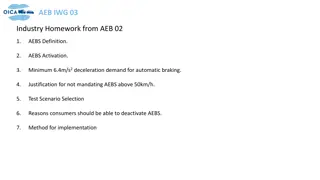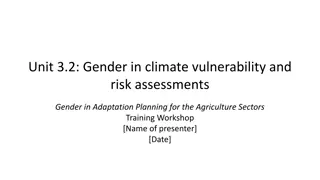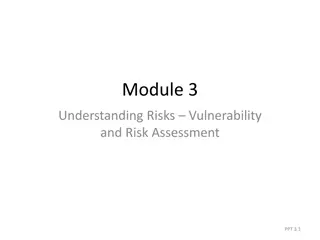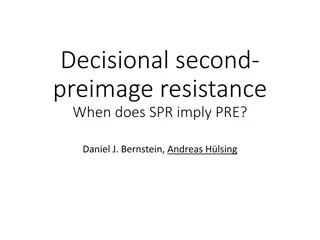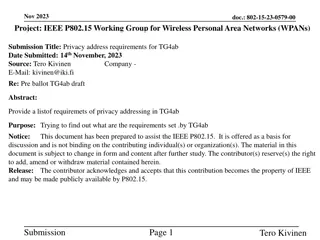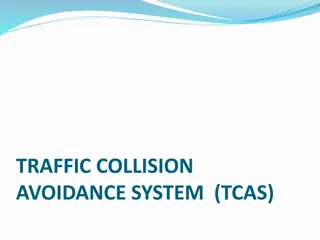MitM Attack by Name Collision: Implications and Vulnerability Assessment
In this research study, the authors delve into the risks and vulnerabilities associated with Man-in-the-Middle (MitM) attacks exploiting name collision in the era of new generic Top-Level Domains (gTLDs). The study highlights how attackers can intercept web traffic by manipulating vulnerable domains and proxy servers, leading to security breaches such as phishing, code injection, and password leakage. Through in-depth analysis, the authors shed light on the impact of these attacks on public and internal DNS namespaces, emphasizing the importance of addressing these vulnerabilities for enhanced cybersecurity.
Download Presentation

Please find below an Image/Link to download the presentation.
The content on the website is provided AS IS for your information and personal use only. It may not be sold, licensed, or shared on other websites without obtaining consent from the author.If you encounter any issues during the download, it is possible that the publisher has removed the file from their server.
You are allowed to download the files provided on this website for personal or commercial use, subject to the condition that they are used lawfully. All files are the property of their respective owners.
The content on the website is provided AS IS for your information and personal use only. It may not be sold, licensed, or shared on other websites without obtaining consent from the author.
E N D
Presentation Transcript
MitMAttack by Name Collision: Cause Analysis &Vulnerability Assessment in the New gTLD Era Qi Alfred Chen, Eric Osterweil , Matthew Thomas , Z. Morley Mao University of Michigan, Verisign Labs
MitM: Name collision + WPAD query leakage Intercept user s web traffic with a vulnerable domain and a proxy server Phishing, code injection FREAK, Logjam1 Password, confid. doc Web Proxy Vulnerable domain 2 1Adrian et al., CCS 15
Background: Public DNS namespace SLD Root TLD .tld1 .example . .tld2 ... example.tld1 TLD registry Registrant 3
Background: Internal DNS namespace SLD Root TLD .tld1 .example . .tld2 ... example.tld1 Internal/local namespace: company.itld www.company.itld company.itld 4
Background: Internal DNS namespace SLD Root TLD .tld1 .example . .tld2 ... example.tld1 .company Internal/local namespace: company.itld www.company.itld company.itld company.itld Name collision 5
Use non-delegated TLDs as iTLDs SLD Root TLD .tld1 .example . itld .tld2 existing TLD ... example.tld1 Internal/local namespace: company.itld www.company.itld company.itld 6
WPAD: Web proxy auto discovery SLD Root TLD .tld1 .example . .tld2 ... example.tld1 Internal/local namespace: company.itld wpad.company.itld www.company.itld Proxy config company.itld Web Proxy 7
WPAD: Web proxy auto discovery SLD Root TLD .tld1 .example . .tld2 ... example.tld1 Internal/local namespace: company.itld wpad.company.itld www.company.itld Proxy config company.itld Web Proxy 8
WPAD query leakage SLD Root TLD .tld1 .example . .tld2 ... example.tld1 From 2 out of 13 DNS root servers, > 20 million leaked queries every day WPAD query leakage wpad.company.itld 9
WPAD query leakage: Was not easily exploitable SLD Root TLD .tld1 .example . .tld2 ... example.tld1 itld No such name (NXDomain) WPAD query leakage existing TLD wpad.company.itld 10
Name collision from new gTLD delegation SLD Root TLD .tld1 .example . Added 900+ since 2013 .tld2 ... example.tld1 New gTLDs .company .<itld> No such name (NXDomain) query leakage WPAD query leakage WPAD company.itld WPAD query leakage Name collision wpad.company.itld 11
Name collision + WPAD query leakage MitM SLD Root TLD .tld1 .example . Added 900+ since 2013 .tld2 ... example.tld1 New gTLDs .company .<itld> company.itld WPAD query leakage info Proxy config. FREAK, Logjam1 Password, confid. doc Web wpad.company.itld Phishing, code injection Proxy 12 1Adrian et al., CCS 15
Name collision + WPAD query leakage MitM SLD Root TLD .tld1 .example . Added 900+ since 2013 .tld2 ... example.tld1 New gTLDs .company .<itld> WPAD name collision attack company.itld WPAD query leakage info Proxy config. FREAK, Logjam1 Password, confid. doc Web wpad.company.itld Phishing, code injection Proxy 13 1Adrian et al., CCS 15
This work First systematic study on WPAD name collision attack Cause analysis Why internal WPAD query leaks? Vulnerability assessment Propose a measurable attack surface definition & quantification Highly-vulnerable domains (HVDs) HVD = high persistence + high volume Dataset: 2-year NXDomain traffic at DNS root server A & J 14
Leak cause analysis Finding: Home access network ASes dominate the WPAD leakage traffic Top 12 leak ASes behavior at home! Related to user (85% of total leaks) A2 A3 A1 A4 A11 A5 A6 A7 A8 A12 Legend A9 A10 Home access network Run popular public resolvers A A 15
Leak domain suffix analysis Finding: Instead of home devices, domain suffixes are actually corporate related real estate defense contractor manufacturing consulting bank Hypothesis: the leaks come from individuals using corporate laptops at home Should create high domain suffix entropy 16
Leak domain suffix entropy Finding: Home network related ASes with top leakage volumes also dominate entropy! Top 12 leak ASes Top 11 high entropy ASes (85% of total leaks) A2 A3 A1 A4 A11 A13 A5 A6 A7 A8 A12 A9 A10 Legend Home access network Run popular public resolvers A 17 A A Other
Leak domain suffix entropy Finding: Home network related ASes with top leakage volumes also dominate entropy! Top 12 leak ASes End devices mistakenly issue internal WPAD queries when outside of internal network. Top 11 high entropy ASes (85% of total leaks) A2 A3 A1 A4 A11 A13 A5 A6 A7 A8 A12 A9 A10 Legend Home access network Run popular public resolvers A 18 A A Other
Device-side causes Finding: Under common OS settings, devices mistakenly issue queries into public DNS Set device domain name Set domain search list 19
Attack surface quantification HVD = high persistence+ high volume Persistence: Leaked in every p-day period for at least n days E.g., p = 1, n = 365: Leaked every day for 1 year Next, find high query volume domain set Systematically explore different p and n until local maximum is reached Evaluation: effective in finding HVDs in the victim ASes 20
Attack surface characterization Finding: A large portion of the attack surface domains are victim AS specific For top 10 leak ASes: out of ~9000 HVDs in total, only 90 in common Pick 3 top leak ASes to compare pair-wisely ~80% HVDs in A indeed has nearly no queries in the other AS HVDs HVDs A Ax Ay for for 21
Registration status characterization Once registered, can start exploits at any time Data: Zone file & Whois data as of 09/26/2015 HVD registration ratio: 7-13% overall Still in the early stage Trend estimation: 60%TLDs attack surface are likely to be fully registered in 2 years Attack window is opening quickly Now is a good time for proactive mitigation! 22
Remediation strategy discussion TLD 1.New gTLD registry level New gTLDs 2. Victim AS level Scrutinize HVD registration: - Deploy #: ~900 Filter leaked WPAD queries: - Use customized list - Deploy #: ~11000 WPAD query leakage 3. End user level AS with WPAD query leakage Stop OS domain hard-coding: - Deploy #: > 6 million wpad.company.itld 23
Summary Performed a systematic study of WPAD name collision attack in the new gTLD era Quantified the problem severity, uncovered the likely problem cause Proposed a candidate attack surface definition, and quantified the vulnerability status in the wild Illustrated real threat, provided a strong and urgent message to deploy proactive protection Discussed remediation strategies with empirical data analysis US-CERT Alert (TA16-144A): WPAD Name Collision Vulnerability 24
Questions? US-CERT Alert (TA16-144A): WPAD Name Collision Vulnerability 25











